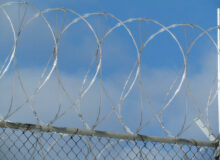Predators
Watch As Cattle Ranchers Hunt Coyotes W/Thermal Optics
Now, I’m sure there’s going to be a few out there that think this might be cruel, but let me assure you, it isn’t. Coyotes are voracious predators and once they get a taste for your stock, they will keep coming back and they will keep killing until you put a stop to it. Coyotes aren’t ‘cute and cuddly’, they’re predators and need to be eliminated if you want your stock to live and thrive.
This excerpt is from beneath the video:
Why do we hunt coyotes?
Coyotes are presently the most abundant livestock predators in western North America, causing the majority of sheep, goat, and cattle losses. For example, according to the National Agricultural Statistics Service, coyotes were responsible for 60.5% of the 224,000 sheep deaths attributed to predation in 2004.
The total number of sheep deaths in 2004 comprised 2.22% of the total sheep and lamb population in the United States, which, according to the National Agricultural Statistics Service USDA report, totaled 4.66 million and 7.80 million heads respectively as of July 1, 2005. Because coyote populations are typically many times greater and more widely distributed than those of wolves, coyotes cause more overall predation losses.
The United States government agents routinely shoot, poison, trap, and kill about 90,000 coyotes each year to protect livestock. Coyotes typically bite the throat just behind the jaw and below the ear when attacking adult sheep or goats, with death commonly resulting from suffocation.
Blood loss is usually a secondary cause of death. Calves and heavily fleeced sheep are killed by attacking the flanks or hindquarters, causing shock and blood loss. When attacking smaller prey, such as young lambs, the kill is made by biting the skull and spinal regions, causing massive tissue and bone damage.
Small or young prey may be completely carried off, leaving only blood as evidence of a kill. In the absence of the harassment of coyotes practiced by rural people, urban coyotes are losing their fear of humans, which is further worsened by people intentionally or unintentionally feeding coyotes.
In such situations, some coyotes have begun to act aggressively toward humans, chasing joggers and bicyclists, confronting people walking their dogs, and stalking small children. Non-rabid coyotes in these areas sometimes target small children, mostly under the age of 10, though some adults have been bitten.
GET MORE STORIES LIKE THIS
IN YOUR INBOX!
Sign up for our daily email and get the stories everyone is talking about.







